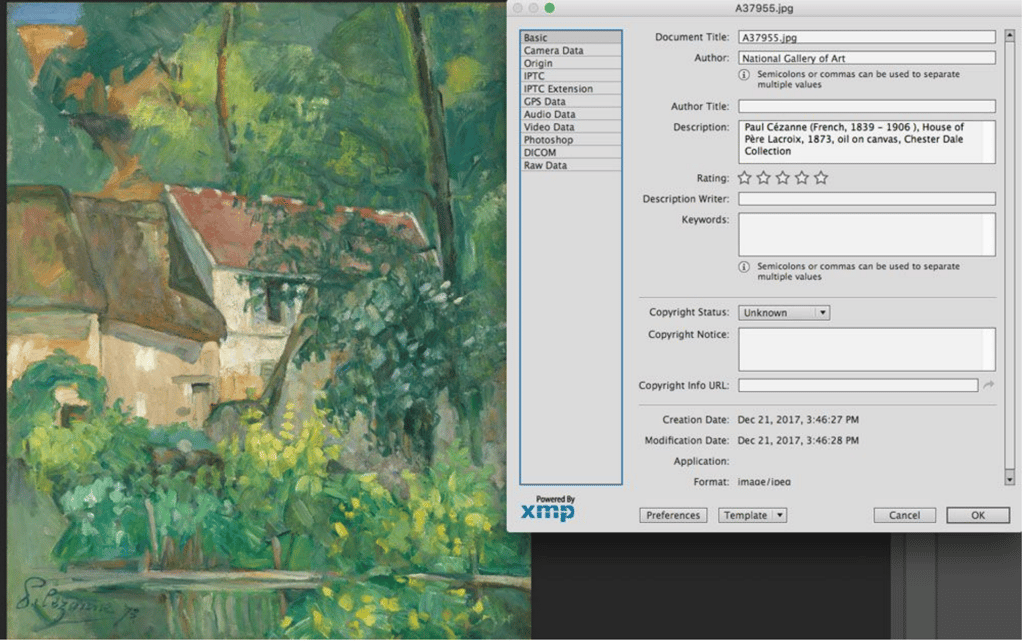
One of the most important things for your DAM users is findability: the ease of finding digital assets. The key to findability is, of course, relevant asset data. Using embedded metadata can be a simple way to automate data input, and increase findability in your DAM.
Most tools used to create digital assets allow authors to enter descriptive text as metadata, which travels with the asset. An example is a photographer’s name/copyright info in Photoshop.
 Embedded Metadata shown in Photoshop
Embedded Metadata shown in PhotoshopThe amount and variety of this embedded text can be vast. The file itself can carry any number of useful data sets with it, wherever it goes. Things like keywords, creation date, copyright, and GPS can then be viewed or extracted by your Digital Asset Management system to create a compelling search experience for users.
Over the next year, I’m acquiring thousands of images from a photo agency with a standard for embedding Photographer’s name in the images via the “Photoshop Author” field, and keywords/phrases in the Description field.
In my DAM, I can set up a Metadata Sync trigger, for the embedded field “Photoshop Author” to be synced (or “mapped”) to a field that I call “Photographer,” and the “Description” field to be synced to a field called “Keywords.”
The Photographer’s name comes into the DAM search engine automatically upon import.
The basic approach is simple, and there are a variety of options around how this can work. It’s crucial for you to understand what type of data your assets may have embedded, and determine which data is useful regarding search and workflow for your users.
You can look for embedded data in all types of assets including videos, PDFs, etc. The common schemas are:
Be aware that there can be a lot of non-useful data embedded in a file. Look for the most useful standardized data, and set up automatic mapping for those fields.
1435 NW Northrup Street
Portland OR 97209
Call us: (503) 499-4342
Gleimstrasse 52
10437 Berlin
Germany